Annual report 2004 - Compagnia di San Paolo
Annual report 2004 - Compagnia di San Paolo
Annual report 2004 - Compagnia di San Paolo
You also want an ePaper? Increase the reach of your titles
YUMPU automatically turns print PDFs into web optimized ePapers that Google loves.
Institutional activities in <strong>2004</strong><br />
Arts<br />
“Canaletto”, Rome, and “Caravaggio”, Naples: two of last year’s major exhibitions<br />
An analysis of the Arts sector activities in <strong>2004</strong> must take into account the general consideration that it<br />
was a year that concentrated on revitalising some “historic” actions, confirming new programmes and<br />
developing a more dynamic strategy in order to implement the aims laid out in the Provisional Planning<br />
Document. Looking at the list of projects, a balance between the “old” and “new” is present in any<br />
event required to satisfy the artistic spirit. But the will to constructively impact is also present in a rapidly<br />
changing society.<br />
This aim is the basis for the new activities started up during the year: protection for areas of natural<br />
beauty, architecture and contemporary art and themes concerning museum management. These<br />
actions are added to the tra<strong>di</strong>tional ones: supporting specialist training events and restoring civil and<br />
religious monuments - benefiting from around 90% of annual resources - and enhancing them through<br />
promoting exhibitions of excellence. For years, choices have been guided by the conviction that<br />
cultural heritage is not only the custo<strong>di</strong>an of intrinsic historical-artistic values, but it is also a source and<br />
generator of well being that expresses itself in a community’s growing awareness in both productivity<br />
and the quality of life.<br />
The willingness to adopt a strategic approach to cultural planning and take a lea<strong>di</strong>ng role among<br />
institutions committed to protecting artistic heritage, led the <strong>Compagnia</strong>, in <strong>2004</strong>, to develop more<br />
integrated operational methods. It achieves this by using tools and training methods that are variable<br />
and flexible accor<strong>di</strong>ng to the needs of the <strong>di</strong>fferent cultural issues. Two permanent organisations flank<br />
the sector’s tra<strong>di</strong>tional grant-making activity: the Fondazione per l’Arte and the Istituto sui Sistemi<br />
Territoriali per l’Innovazione (SiTI). Institutional support to the former is founded on the conviction that<br />
the sector’s high level of theoretical maturity on certain subjects could develop even further by taking<br />
on operating responsibilities; in particular concerning museum management, training programmes on<br />
39



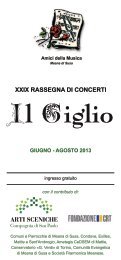
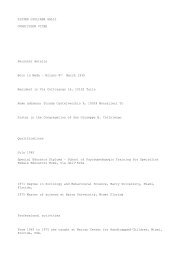
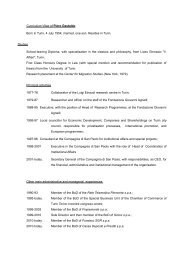
![ArchivioStorico 178 [PDF] - Compagnia di San Paolo](https://img.yumpu.com/47667361/1/185x260/archiviostorico-178-pdf-compagnia-di-san-paolo.jpg?quality=85)

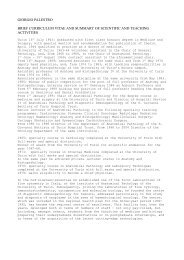
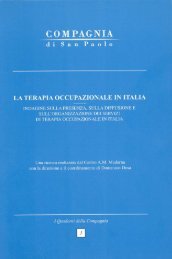
![brochure spazio 768 [PDF] - Compagnia di San Paolo](https://img.yumpu.com/36141511/1/190x255/brochure-spazio-768-pdf-compagnia-di-san-paolo.jpg?quality=85)
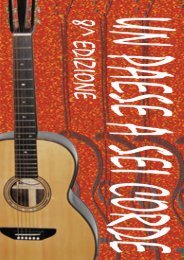
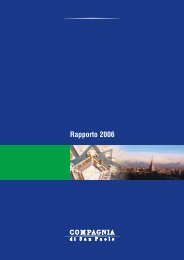
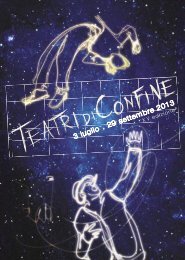

![Rapporto annuale 2008 [PDF] - Compagnia di San Paolo](https://img.yumpu.com/30320485/1/184x260/rapporto-annuale-2008-pdf-compagnia-di-san-paolo.jpg?quality=85)